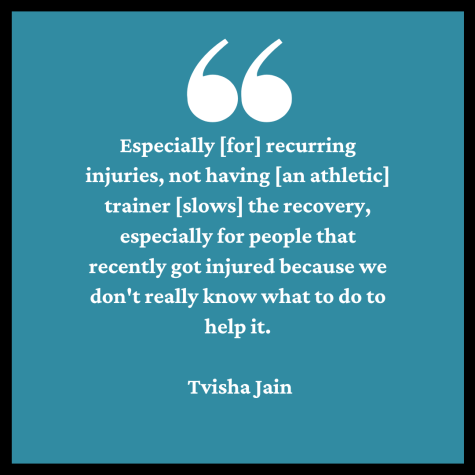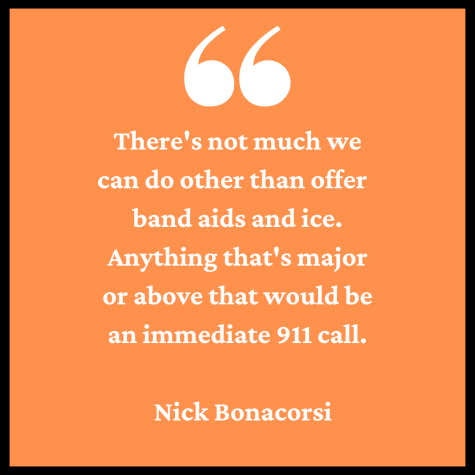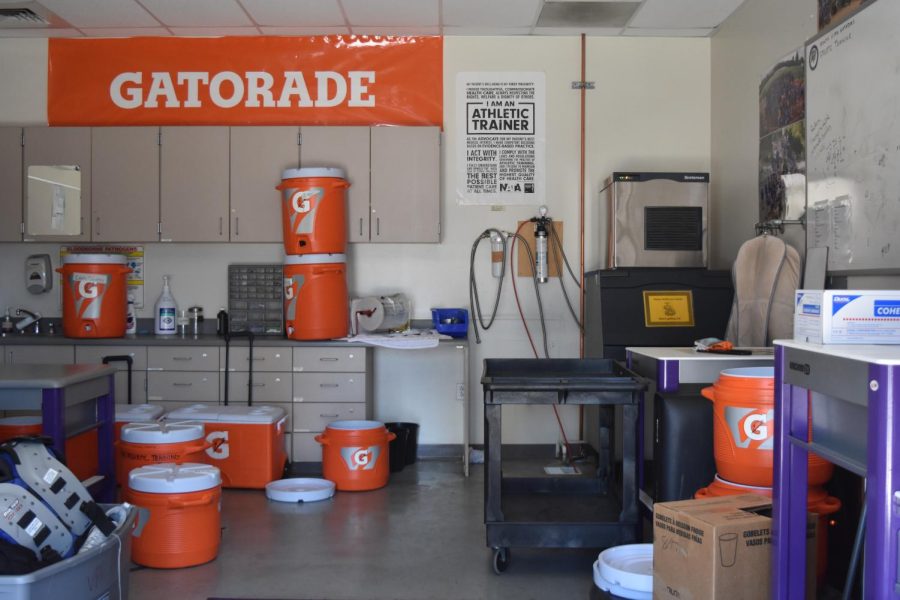On the lookout for a new Athletic Trainer
Examining how sports teams are facing injuries without a medical professional affiliated with the school
The MVHS Athletic Trainer room, currently vacant.
October 1, 2022
Following the departure of former Athletic Trainer Javier Margarito, current fall season athletes have experienced difficulties in injury recovery. Without the guidance and expertise of an athletic trainer, sports teams struggle to handle injuries and have been forced to reorganize their rosters to accommodate out of commission players, according to sophomore and field hockey player Tvisha Jain.
Jain attributes the increase in injuries on her team to the lack of a consistent athletic trainer. According to Jain, the team has had six injured players so far this season. This was a major contributing factor to the coach’s decision to combine the JV and Varsity teams into a single Varsity team for the rest of the season.

“Having a trainer really helps you out,” Jain said. “Especially [for] recurring injuries, not having [an athletic] trainer [slows] the recovery, especially for people that recently got injured because we don’t really know what to do to help it.”
Similarly, treating injuries for the football team has been more of a struggle compared to previous years due to the absence of an athletic trainer, according to junior and football player Nathan Diaz.
Athletic Director Nick Bonacorsi points out that the struggle to hire an athletic trainer is prominent throughout FUHSD, with Lynbrook High School and Fremont High School also starting off the year with no athletic trainer. Though LHS and FHS have been able to fill those positions, MVHS is still searching. Bonacorsi believes a reason for this might be because MVHS only offers a part-time position of 20 hours a week. The previous MVHS athletic trainer, Javier Margarito, also left due to finding a full-time position.
“We haven’t had a lot of applicants that are willing to work part time, so that’s been the biggest hurdle,” Bonacorsi said. “If anyone is hurt, or is looking to [go to] rehab or something like that, unfortunately, it falls on the coaches or the parents to organize either physical therapy or going to see their doctor or whatever it might be, depending on the severity of the injury.”
Bonacorsi says that currently, athletes are instructed to individually seek outside help if they get injured. Coaches are also offered access to the athletic room for use to treat injuries.

“The advice for coaches is to always [lean towards] the side of over-precaution,” Bonacorsi said. “There’s not much we can do other than offer band aids and ice. Anything that’s major or above that would be an immediate 911 call.”
Besides the safety measures that Bonacorsi has offered, some sports teams have found their own way to get by. According to junior and cross country runner Agnes Wang, the Cross Country team has their own physical therapist who gives them important advice.
“Coach [Flatow] invited his own physical therapist to come two days a week,” Wang said. “We go to her and she gives us strengthening advice and tells us how much to run or if we can run.”
The physical therapist, Irina Stiasny, used to be a Track and Field coach at MVHS and is a runner herself, a connection that allowed the team to easily contact her. Although other sports teams have not been able to hire their own medical staff, the Field Hockey team has made small changes to athletic gear and team size in an attempt to prevent and prepare for possible injuries.
“More people are getting turf shoes, which helps a lot with knee injuries because it supports your leg more and you don’t slip as much on the turf,” Jain said. “I think we’re also gonna have more subs so you won’t have to play when you’re kind of injured — you can just come out and have someone sub [in] for you.”
As Bonacorsi is uncertain about when MVHS will be able to find a new athletic trainer, these changes may prove to be crucial going forward.
“It has historically been difficult to find quality athletic trainers who are certified and able to fulfill the needs of the role,” Bonacorsi said. “Part of it is [due to] pay structure. There’s a high cost of living here and so having a full time athletic trainer where the salary is comparable is important.”


















